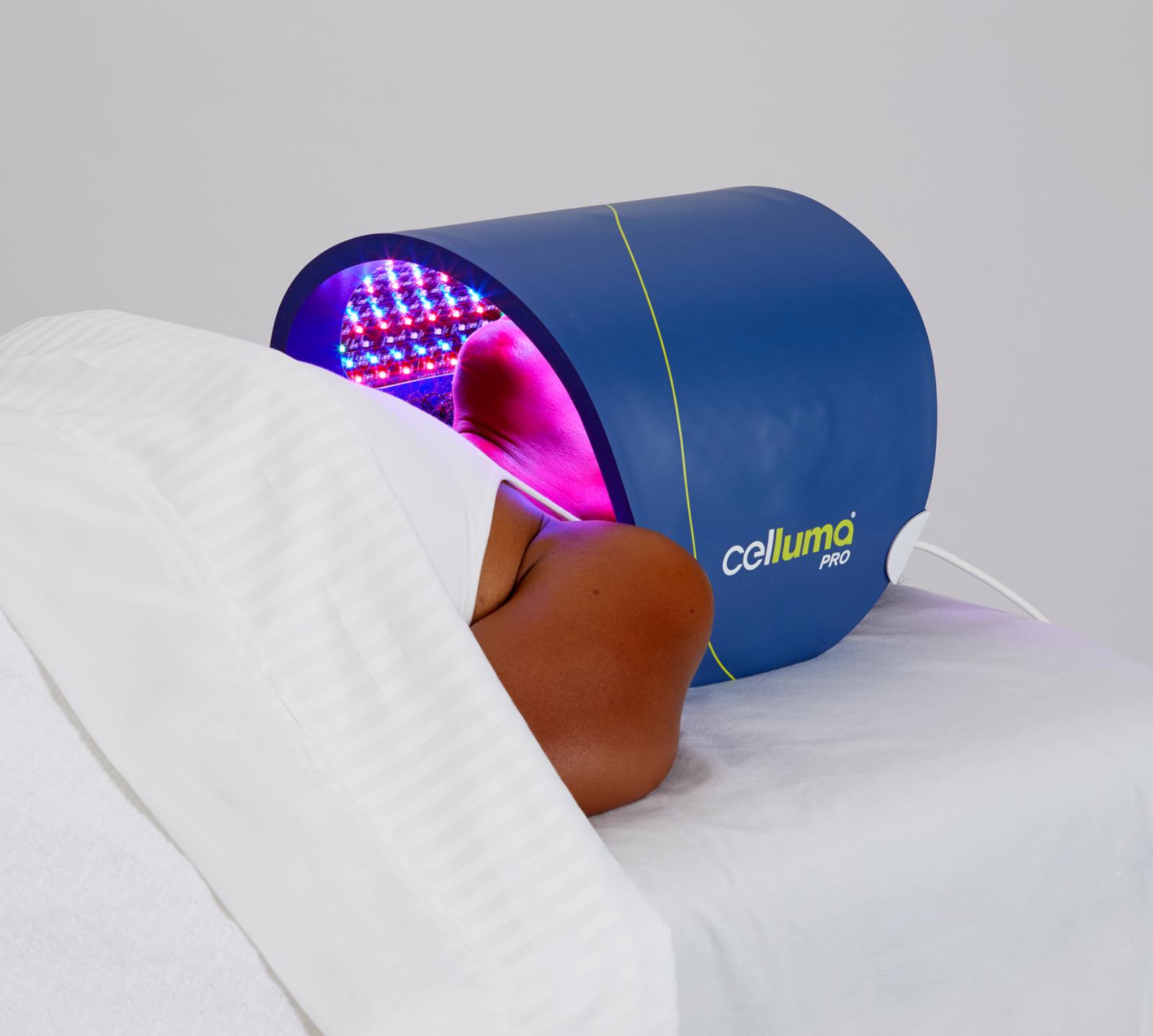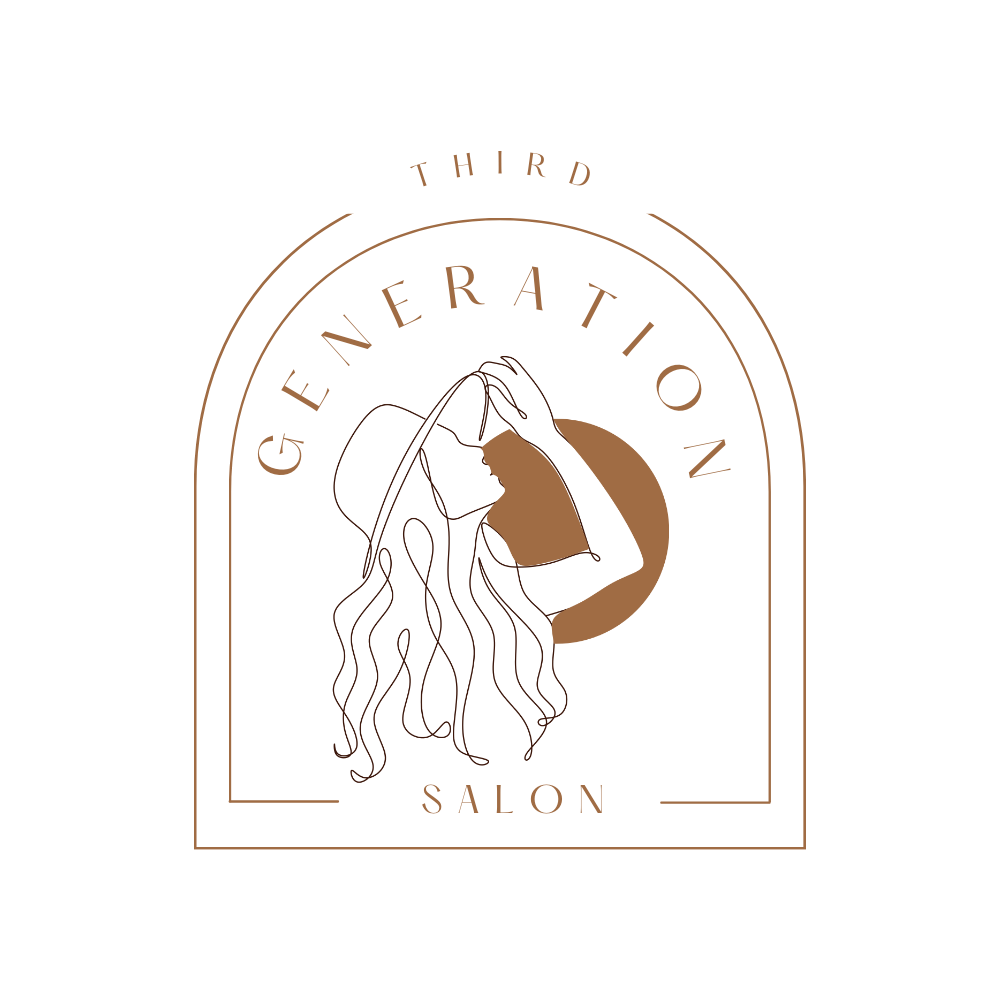Celluma LED Light Therapy
Backed by Clinical Research
WHAT IS RED LIGHT THERAY?
Red light therapy is frequently used as a broad term to describe light emitting diode (LED) therapy, also known as photobiomodulation or low-level light therapy (LLLT), which is the application of specific wavelengths of light energy to tissue to achieve therapeutic benefits. This non-invasive treatment is effective for addressing various conditions, including acne, aging skin, pain, hair restoration, excess fat, and more. The absorbed light energy enhances cellular performance, promoting self-repair and rejuvenation.
Phototherapy, particularly LED red and near-infrared light therapy, is well-researched and supported by thousands of peer-reviewed clinical studies from prestigious institutions worldwide. This clinically validated technique has gained widespread global adoption in mainstream medicine with dermatologists, cosmetic and general surgeons, and pain management professionals globally.
WHY CELLUMA?
Not all LED light therapy devices are created equal.
Celluma is the innovation leader in FDA-cleared, professional-grade, medical-grade LED light therapy solutions. We are trusted every day by tens of thousands of loyal customers, doctors and clinicians in 100+ countries. Read more about why there's only one Celluma.
30 MINUTE SESSION $50 NOW $30
Book Now
How Celluma Light Therapy Works for Hair
Growth
How Celluma Light Therapy Works for Anti
Aging and Wrinkles
How Celluma Light Therapy Works to treat Acne
WHAT IS LED LIGHT THERAPY?
Light emitting diode (LED) therapy, also known as photobiomodulation or low-level light therapy (LLLT), is the application of specific wavelengths of light energy to tissue to achieve therapeutic benefits. This non-invasive treatment is effective for addressing various conditions, including acne, aging skin, pain, hair restoration, excess fat, and more. The absorbed light energy enhances cellular performance, promoting self-repair and rejuvenation—just as nature intended.
Phototherapy, particularly LED red light therapy, is well-researched and supported by thousands of peer-reviewed clinical studies from prestigious institutions worldwide. This clinically validated technique is increasingly recognized by dermatologists, cosmetic and general surgeons, and pain management professionals globally, gaining widespread acceptance in mainstream medicine.
How Light Therapy Works to Treat Pain
Getting Just The Right Dose
We know that effective results from low level LED light therapy starts with the factors that provide a safe, effective dose that up-regulates mitochondrial ATP levels.
Proven Wavelengths
Red light, near infrared light, and blue light are the most clinically studied and proven to produce beneficial effects. Celluma utilizes all three wavelengths synergistically, with doses dependent upon the type of treatment protocol for conditions like aging skin, acne, hair loss, muscle and joint pain, wounds, and excess fat.
Distance & Power
Power and distance from the light source are directly related. In low-level light therapy, like in photography, the inverse square law tells us that with each incremental increase in the distance from the light source, there is an exponential decline in the intensity of light. So ensuring the proper distance from a light source that utilizes a proper power output is an important balancing act in ensuring both safety and efficacy. Too much power at a close distance can be toxic and harmful to the skin. Too little power (or too much distance from the LED source), and treatments will be ineffective.
Celluma devices are designed to be flexible and shaped around the face or body, as close to the skin as possible. Therefore, we are able to make devices that require less power, are safe to have close to or directly on the skin, and most importantly deliver an effective dose within the biphasic dose response curve within 2 - 10 Joules/cm2
TIME
Cells need time to absorb light. You can't speed up nature (or results) if you don't give your body enough time to absorb the light energy that stimulates the up-regulation of mitochondrial ATP levels. There is a lot of misinformation claiming that more powerful devices will deliver the same results in less time. This is not supported by the scientific research, and could also lead to harmful effects. As long as the optimal dose is delivered safely and correctly with the right power output, distance, and proven wavelengths, 30 minutes will get you the optimal results.

Patented Shape-Taking Design
The distance between the light source and treatment area is critical for successful outcomes.
Human bodies are not flat. Thus, maintaining a consistent proximity between the body and the light source is crucial in delivering the optimal dose of light energy to our cells. Which is why we designed and patented our award-winning, flexible, shape-taking technology that allows anyone to contour Celluma LED panels as close as possible to the skin for getting just the right dose of uniform light energy for safe, effective results.
FDA-Cleared vs. FDA-Approved LED Light Therapy?
- by Team Celluma
- January 17, 2021
If you have ever wondered about the difference between FDA-Cleared versus FDA-Approved LED light therapy devices, then read on for a full explanation and learn why this difference matters. This key distinction can help you make informed buying decisions when looking at purchasing any medical device.
What is the FDA?
The Food and Drug Administration (FDA) is an agency within the U.S. Department of Health and Human Services (HHS). It consists of the Office of the Commissioner and four directorates overseeing the core functions of the agency: Medical Products and Tobacco, Foods and Veterinary Medicine, Global Regulatory Operations and Policy, and Operations. FDA is responsible for protecting the public health by assuring safety and effectiveness.
The FDA (Food and Drug Administration) regulates all medical claims made by device manufacturers regarding their products. The Agency uses two different processes based on comparative risk for reviewing medical claims before manufacturers are permitted to make those claims commercially.
Buyer Beware
For example, if you are looking to purchase an LED red light therapy device for the treatment of acneOpens a new window, wrinkles, pain, or just improve your skin tone and texture, you want to make sure you are purchasing a device that has been thoroughly vetted for safety and efficacy, right?
The 510(k) Process
The 510 (k) process is intended to review devices that are better understood by the Agency and/or potentially less hazardous to patients, like Celluma red light therapy devices. This process is most often used to review Class II devices. This is a less burdensome review process and if the Agency concludes that the manufacture has demonstrated the device is substantially equivalent to a legally marketed device, the device is “cleared” for commercialization. A device being “cleared” is not a reflection on the efficacy of the device, only an indication of the comparative risk in use.
The Pre-Market Approval (PMA) Process
The Pre-Market Approval (PMA) process is intended for devices not as well known to the Agency and that pose a greater risk to the patient, like implantable devices. An example would be a heart stint. These types of products are considered Class III devices. A PMA is a more burdensome process and if the Agency concludes the manufacturer’s claims are supported using this process, the device is “approved” for commercialization.
Reclassification
As a particular Class III device becomes better known to the FDA, it may be re-classified as a Class II device, meaning any subsequent review of such devices by the Agency will be done using the 510(k) process. Again, a PMA “approval” does not denote the relative efficacy of a device, only the comparative risk of the device in use.
The Distinction
That said, a device “clearance” is not somehow a subordinated “rating” by the FDA in comparison to an “approval.” It is just the favorable conclusion of a different review processes used by the Agency, depending on how common and how risky is the device getting reviewed.
Given that LED red light therapy is a well-known modality of treatment to the FDA, and possesses little to no risk to the user, such devices are subject to 510(k) review and are “cleared” for sale by the FDA. That being the case, a product that is advertised as FDA APPROVED LED LIGHT THERAPY TREATMENT is an incorrect use of the Agency’s nomenclature and a likely indication of false advertising. FDA APPROVED LED LIGHT THERAPY TREATMENT is not a “thing” because LED devices are not reviewed by the FDA using the PMA process.
False Advertising
If you see an advertisement for an FDA APPROVED LED LIGHT THERAPY TREATMENT or a manufacture tells you they sell FDA APPROVED LED LIGHT THERAPY TREATMENT, they either don’t know what they are talking about, they are trying to mislead you, or both. LED light therapy devices are cleared by the FDA, they are not approved. So buyer beware…something purported to be an FDA APPROVED LED LIGHT THERAPY TREATMENT has likely not been subject to any FDA review, because the Agency is very specific as to how reviewed devices are to be advertised.
LED Light Therapy - Does FDA Clearance Matter?
As a skin care professional, does a device’s FDA credentials really make a difference? Isn’t the FDA something doctors deal with? For treating the superficial layers of the skin and dealing with conditions like acne and wrinkles, do devices with FDA credentials work any better than those that don’t? Don’t FDA credentials just make devices more expensive? All great questions for today’s skin care professional.
Efficacy & Safety
The FDA regulates any “medical claims” made by device manufacturers. Accordingly, before any medical claims can be legally made by a device manufacturer, those claims must be reviewed by the FDA for both efficacy and safety. The FDA does not test devices themselves, however they thoroughly analyze the data submitted by manufacturers, or “sponsors” to ensure that the claims being made about the device are substantiated and that users of the products can expect effective and safe performance, relative to the claims.
Rigorous Process
Having a medical device “cleared” by the FDA is a rigorous, time-consuming and expensive process. Medical device manufacturers that pursue FDA-clearance are demonstrating to the public their commitment to providing safe and effective products. Essentially, they are putting their money where their mouth is. As such, devices that are granted FDA-clearance are made by companies who have the public interest in mind and don’t try to circumvent federal regulations in taking their products to market.
Making the Right Choice
By choosing FDA-cleared medical devices you are assured that appropriate regulation and authoritative oversight has been conducted. FDA-clearance means that the device you are purchasing has been confirmed efficacious and safe when used as directed. In order for a medical device to receive FDA-clearance, each component of the device must pass inspection - including each of its sources, suppliers, and manufacturers.
No Accountability
Without FDA regulation, neither the device itself nor its suppliers are held accountable to quality controls or manufacturing standards, resulting in a product that may be considerably less effective and oftentimes significantly less safe than FDA-cleared devices.
U.S. vs Europe
Historically, the regulatory hurdles in Europe have been easier to clear, requiring less specific clinical data, compared to the FDA. However, starting in 2021, the European Medical Device Authorities will be “harmonizing” their registration standards along the lines of the FDA. As such, clearing registration hurdles similar to the FDA is going to be required of all medical devices in Europe. That makes devices already cleared by the FDA likely compliant with the new, more stringent EU registration requirements.
Around the World
Globally, the FDA is viewed as being at the forefront of regulatory standards and regulations, monitoring, compliance, and guidance for the medical device industry. Currently and continually, this is evidenced by a harmonization of international and FDA standards and regulations. FDA's responsibilities extend to the 50 United States, the District of Columbia, Puerto Rico, Guam, the Virgin Islands, American Samoa, and other U.S. territories and possessions.
Different Classes of Devices
In reviewing the safety and efficacy of medical devices, the FDA categorizes devices into three distinct classes: Class I is for devices where no medical claims are made and there is a low risk in using the device. The classic example of a Class I device is a tongue depressor. Class II is for devices for which medical claims are made and there is a moderate risk in using the device. Most devices used by skin care professionals are Class II Devices. The successful FDA review of a Class II devices results in the “FDA-clearance” of the device.
Class III devices are typically “invasive,” resulting in the disruption of vital tissue, including “implantable” devices. The successful FDA review of a Class III devices results in the “FDA-approval” of the device. Accordingly, a skin care professional will likely never use a FDA-approved device and should be very suspicious of anyone claiming that a device for skin care professional is FDA-approved.
No Downside for Your Practice
Using FDA-cleared devices in a skin care business ensures that the device has been rigorously reviewed by the Agency for safety and effectiveness. For example, if a device claims to treat acne, you want to know that the device has been reviewed to make sure that it, in fact, does treat acne and will provide your clients with the results they are looking for. That being the case, you can rest assured that the results being claimed by the manufacturer can be reproduced in your practice. FDA clearance also serves to differentiate you from other skin care clinics in your area and will leave your clients with a greater sense of confidence in your professional choices. Bottom line, there are many advantages to using FDA-cleared devices and no real downside.
SHARE THIS STORY
- Celluma on InstagramOpens a new windowOpens a new window
- Share this story on FacebookOpens a new window
- Share this story on TwitterOpens a new window

About the Author
Team Celluma is a devoted squad of individuals with a shared dedication to global wellness and deeply inspired by light and its power to transform lives. We're passionate about making the world a better place by providing solutions that improve the health and wellbeing of people worldwide.

Interested in Purchasing your own device?
Contact Holly for purchase options

